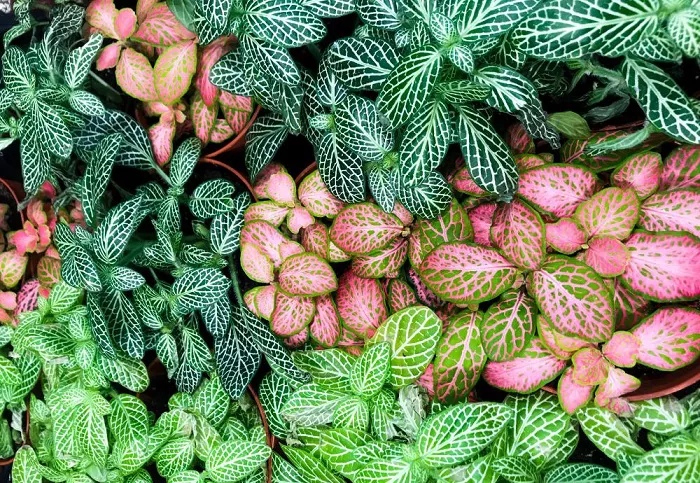Fittonia plants, with their vibrant foliage and delicate patterns, are a popular choice for indoor gardening enthusiasts. These charming plants are often admired for their ability to add a touch of greenery to any space. However, many gardeners wonder about the lifespan of Fittonia plants. Understanding how long they can thrive and what factors influence their longevity is essential for those who wish to enjoy these beautiful plants for as long as possible. In this article, we will explore the average lifespan of Fittonia plants, the factors that affect their longevity, and tips for maximizing their life span.
Understanding the Lifespan of Fittonia Plants
Fittonia plants, commonly known as nerve plants or mosaic plants, are native to the tropical rainforests of South America. Their natural habitat plays a significant role in determining their lifespan when grown indoors. In their native environment, Fittonia plants can live for several years, often thriving in the moist, shaded understory of the rainforest. When cultivated as houseplants, their lifespan can vary depending on various factors such as care, environment, and genetics.
Average Lifespan of Fittonia Plants
On average, Fittonia plants can live for about 2 to 5 years when grown indoors. This lifespan can be influenced by several factors, including the quality of care provided, environmental conditions, and the specific variety of Fittonia. Some well-cared-for plants may live longer, while others may have a shorter lifespan if they are not provided with the right conditions.
Factors Influencing Lifespan
Several factors can significantly impact the lifespan of Fittonia plants. These include lighting, humidity, temperature, watering, and soil quality. By understanding and managing these factors, gardeners can help their Fittonia plants thrive and potentially extend their lifespan.
Lighting Requirements
Fittonia plants thrive in bright, indirect light. They are sensitive to direct sunlight, which can scorch their leaves. Placing them near a north-facing window or providing filtered light through a sheer curtain is ideal. Insufficient light can lead to leggy growth and reduced foliage color, while too much direct sunlight can cause leaf burn and stress the plant.
Humidity and Temperature
As tropical plants, Fittonia thrive in high humidity and warm temperatures. They prefer a humidity level of around 60% to 80%, which can be challenging to maintain in many indoor environments. Using a humidifier or placing the plant on a tray of water with pebbles can help increase humidity around the plant. Additionally, Fittonia plants prefer temperatures between 65°F and 75°F (18°C to 24°C). Avoid placing them near drafts or air conditioning vents, as sudden temperature changes can stress the plant.
Watering and Soil Quality
Proper watering is crucial for the health and longevity of Fittonia plants. They prefer consistently moist soil but do not like to sit in water, as this can lead to root rot. Water the plant when the top inch of soil feels dry, and ensure that the pot has proper drainage. Using a well-draining, peat-based potting mix is recommended, as it helps retain moisture while allowing excess water to drain away.
Maximizing the Lifespan of Fittonia Plants
To help your Fittonia plant live its longest and healthiest life, it is essential to provide optimal care and monitor its environment closely. Here are some tips for maximizing the lifespan of your Fittonia plant.
Regular Maintenance
Regular maintenance is key to keeping your Fittonia plant healthy. This includes removing any dead or yellowing leaves, which can help prevent the spread of disease and keep the plant looking its best. Additionally, pruning back leggy stems can encourage bushier growth and a more attractive appearance.
Fertilization
Providing your Fittonia plant with the right nutrients can help support its growth and longevity. Use a balanced, water-soluble fertilizer diluted to half strength every 4 to 6 weeks during the growing season. Avoid over-fertilizing, as this can lead to salt buildup in the soil and damage the plant’s roots.
Pest and Disease Management
Fittonia plants are generally hardy but can be susceptible to pests such as spider mites, mealybugs, and aphids. Regularly inspect your plant for signs of pests and treat any infestations promptly with insecticidal soap or neem oil. Additionally, maintaining good air circulation around the plant can help prevent fungal diseases.
Common Challenges and Solutions
Despite their beauty, Fittonia plants can present some challenges for indoor gardeners. Understanding common issues and how to address them can help ensure your plant thrives.
Leaf Curling and Browning
Leaf curling and browning can be signs of stress in Fittonia plants. This may be caused by insufficient humidity, overwatering, or exposure to direct sunlight. To address this, increase humidity around the plant, ensure proper watering practices, and move the plant to a location with bright, indirect light.
Leggy Growth
Leggy growth is often a result of insufficient light. If your Fittonia plant is stretching towards the light and producing sparse foliage, it may need to be moved to a brighter location. Additionally, pruning back the leggy stems can encourage bushier growth and a more compact appearance.
Root Rot
Root rot is a common issue in overwatered Fittonia plants. Symptoms include yellowing leaves, a foul odor from the soil, and a mushy root system. To prevent root rot, ensure proper drainage in the pot and allow the soil to dry slightly between waterings. If root rot is detected, repot the plant in fresh, well-draining soil and trim away any affected roots.
Conclusion
Fittonia plants can bring a touch of tropical beauty to any indoor space, and with proper care, they can thrive for several years. By understanding their average lifespan and the factors that influence it, gardeners can take steps to maximize the longevity of their Fittonia plants. Providing the right lighting, humidity, temperature, and soil conditions, along with regular maintenance and pest management, can help ensure these plants remain healthy and vibrant. So, if you are considering adding a Fittonia plant to your collection, rest assured that with a little care and attention, you can enjoy its unique beauty for years to come.


